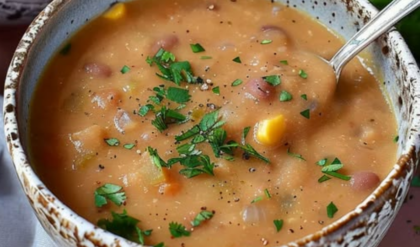Maintaining a flourishing vegetable garden requires consistent watering, but what if you could automate this task while ensuring your plants receive just the right amount of moisture?
Ensuring your plants receive consistent and adequate water can be a challenge, especially in dry seasons. Here are three simple and cost-effective methods to create your own drip irrigation systems using common household items such as plastic bottles and buckets.

Method 1: Simple Drip Irrigation with a Plastic Bottle
Materials Needed:
An empty plastic bottle (1 or 2 liters)
A small nail or pin
A knife or scissors
Steps to Create Your Drip Irrigation System:
- Prepare the Bottle:
Clean the plastic bottle thoroughly to remove any residues.
Remove the label to ensure it doesn’t interfere with the irrigation process.
Make the Drip Holes:
Use a small nail or pin to poke 2-3 tiny holes in the bottle cap.
Ensure the holes are small enough to allow a slow, steady drip of water.
Cut the Bottom of the Bottle:
Use a knife or scissors to cut off the bottom of the bottle.
Make sure the opening is wide enough for easy refilling.
Insert the Bottle into the Soil:
Dig a small hole next to the plant you wish to irrigate.
Insert the bottle cap-side down into the hole, making sure it is stable.
Fill the Bottle with Water:
Fill the bottle through the open bottom.
The water will slowly drip out through the holes in the cap, providing a consistent water supply.
Adjust as Needed:
Check the water flow after a few hours.
Adjust the size or number of holes if necessary to ensure an appropriate drip rate.
Tips for Optimal Use:
Place the bottle close to the plant roots, but not directly on them to avoid waterlogging.
Refill the bottle daily or every few days, depending on the water needs of the plant.
For larger plants or garden beds, consider using multiple bottles.
This method helps conserve water by minimizing evaporation and directing water to where it’s needed most.
Method 2: Drip Irrigation with a 5-Liter Bottle and Hose
Materials Needed:
A 5-liter plastic bottle
A small hose
A piece of cloth (ideally a wick material)
Steps to Create Your Drip Irrigation System:
- Prepare the Bottle:
Clean the 5-liter plastic bottle thoroughly.
Remove any labels from the bottle.
Attach the Hose:
Insert one end of the small hose into the mouth of the bottle.
Secure it tightly to prevent any water leakage.
Prepare the Cloth:
Attach a piece of cloth to the other end of the hose.
Use a cloth that acts as a wick to regulate the water flow effectively.
Insert into Soil:
Dig a small hole near the plant you wish to irrigate.
Insert the cloth end of the hose into the soil, ensuring it is close to the plant roots.
Fill the Bottle with Water:
Fill the 5-liter bottle with water.
The water will slowly travel through the hose and the cloth, providing a steady moisture supply to the plant.
Tips for Optimal Use:
Check the water flow regularly to ensure it is steady but slow.
Refill the bottle as needed.
This method is ideal for plants requiring consistent moisture, such as strawberries, tomatoes, and cucumbers.
Method 3: Bucket Irrigation with a Controlled Outlet
Materials Needed:
A large plastic bucket (10-20 liters)
A small tap or valve
A hose or tube
Steps to Create Your Bucket Irrigation System:
- Prepare the Bucket:
Clean the bucket thoroughly to remove any contaminants.
Ensure the bucket is in good condition and free from cracks.
Install the Tap or Valve:
Drill a hole near the bottom of the bucket.
Install the tap or valve in the hole and seal it tightly to prevent leaks.
Attach the Hose:
Connect a hose or tube to the tap or valve.
Ensure the connection is secure to avoid water leakage.
Place the Bucket:
Place the bucket on an elevated surface near the plants.
Position the hose so it reaches the plant roots.
Fill the Bucket with Water:
Fill the bucket with water.
Open the tap or valve slightly to allow a controlled flow of water through the hose to the plants.

Tips for Optimal Use:
Adjust the tap or valve to regulate the water flow as needed.
Refill the bucket as required, depending on the water needs of the plants.
This method is suitable for larger gardens or plants that require more water.
By using these simple DIY methods, you can ensure your plants receive a steady and adequate water supply, promoting healthy growth and conserving water. These methods are not only cost-effective but also easy to implement, making them perfect for gardeners of all levels.





